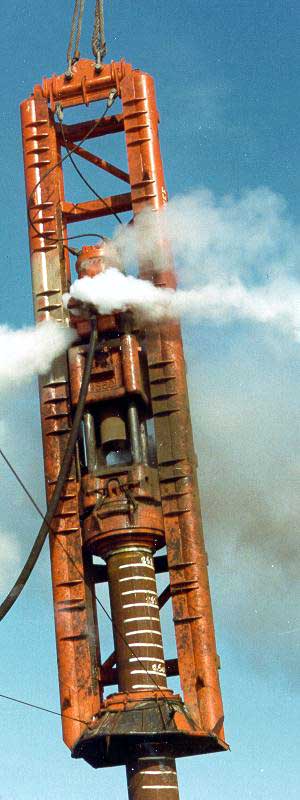
The design of driven pile foundations–the oldest form of deep foundation in use–is something that gets the short shrift in many treatments of geotechnical design. That certainly was never the case during the years I taught geotechnical engineering. In this series I plan to develop a guide to how this is done using materials from Foundation Design and Analysis and elsewhere and as a supplement to my textbook for construction managers, Soils in Construction. That textbook was the main impetus for developing this series.
Vulcan never got itself into the foundation design business, which was a good thing. However, one lesson from my years at Vulcan–and subsequent teaching–is that it is necessary for contractor and equipment manufacturer alike to have a working grasp of driven pile design, because the load-bearing (both axial and lateral) characteristics of a pile are dependent upon how the pile is installed and, more importantly, whether that pile can be installed or not. The Pile Driving Contractors Association like to tell us that “a driven pile is a tested pile,” but same pile cannot fulfil its purpose unless it can be properly gotten into the ground in the first place. It is why a series like this will not only include the static design of a pile, but also the installation and verification of the capacity of the pile, along with some information on how that capacity should be computed.
The topics to be covered are as follows:
- Overview of Driven Piles and Pile Driving Equipment (below)
- Axial Bearing Capacity of Piles and Static Load Testing
- Lateral Capacity of Piles
- Pile Drivability and Dynamic Verification
- ASD and LRFD Design of Piles
To illustrate the methods used the same pile will be analysed; it is the pile below. It appears in the document Design of Deep Foundations. In spite of its primitive graphics and advanced age, it is still a very useful document. (Advanced age isn’t always a liability: in this business, the technology tends to advance slowly, and frequently useful information is mangled or lost.)
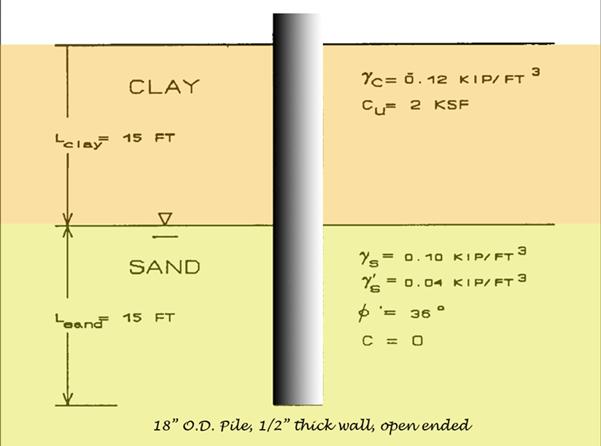
Overview of Driven Piles
When teaching this topic the first thing I discussed was the driving equipment and types of piles in use. Here I will refer the reader to my page Foundation Design and Analysis: Deep Foundations, Overview of Driven Piles. It includes my slide presentation and me actually lecturing on the topic on video (a positive side effect of the COVID pandemic.) The following is a brief summary of that.
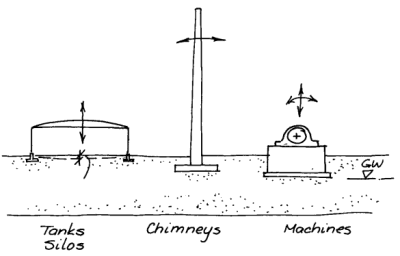
The basic rationale for driven piles–and really deep foundations in particular–is that the “default” foundation–shallow foundations–either a) result in excessive settlement due to the concentration of the loads or b) the foundation must carry loads that shallow foundations are poorly suited or unable to do, in particular lateral and tension loads. This can be seen by the diagram at the right.
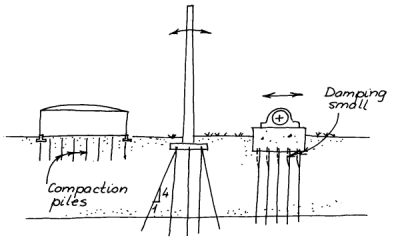
Under these conditions it is necessary to install deep foundations to carry these loads, as is shown on the left. In some cases the loads are transferred to a more “competent” layer further below the surface. The example on the far left shows the use of driven piles to compact the soil below a foundation; this is not common but we still see this in use.
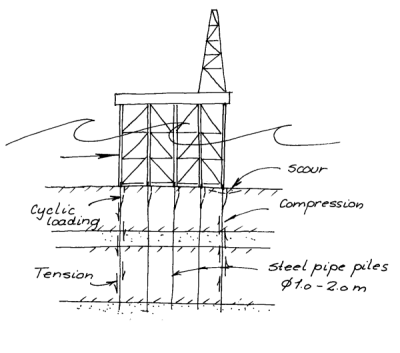
In some cases it is necessary to resist tensile loading, which shallow foundations have little resistance for. This was especially true with offshore platforms (and later some offshore wind turbines.) We can see this at the right. The history behind conventional platforms, along with information on the design and installation of these piles, can be found in the series Vulcan: the Offshore Experience.
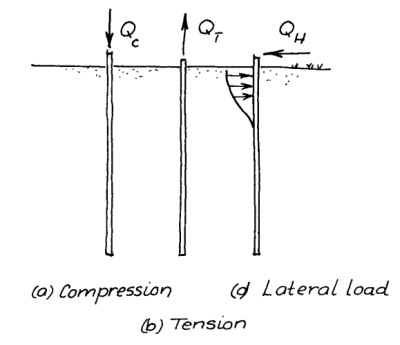
Lateral loading is also important in certain applications. Treatment of the design of driven pile foundations tends to concentrate on axial loading, and it’s true that axial load is the single most important form of loading for driven pile foundations. That said, there are certain applications for which lateral loading is the most important. The proper analysis of lateral loading came up with the same offshore industry that focused interest on tension loading. With a monopile offshore wind structure, or example, virtually all of the loading is lateral. The distinction between compression, tension and lateral loading can be seen at the left.
Although more detail about types of driven piles and impact pile drivers can be found in my Foundations presentation, a quick summary of both is below.
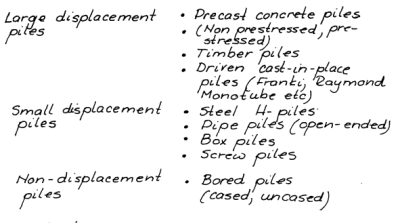
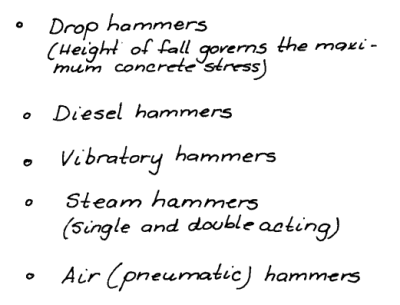
A Note About the Series
The principal purpose of the series is to give an introduction to driven pile design. It isn’t intended to cover every aspect of it. It would be a long business, for example, to review all of the methods for estimating the axial capacity of a pile (and that doesn’t say anything about the whole business of “bearing capacity.”) So if I have left something out you can bring it to my attention but I may or may not add it to the series.
Much of the design of driven piles–especially with pile dynamics–is currently done using numerical methods of one kind or another, and that involves computer software. This site and its companions have always been run on a “low budget” concept. Most of the software that will be featured is very old. Most of it is also the direct ancestor of what is “state of the art” today, and the differences are both more and less important than those who market the solutions today care to admit. My intent is to use these to illustrate the concepts. If you find yourself doing this for a living on a regular basis I would urge you to get the newest versions available and to be come very proficient at using them.
Note About the Illustrations
You will see many hand-drawn illustrations in this series. These came from the pen (pencil?) of Dr. Bengt Broms, the eminent Swedish geotechnical engineer and educator, and were prepared for the excellent Geoforum site, which was active in the early days of my sites. He passed away in 2024 and this series is dedicated to his memory.
As always, all of the material in this course is subject to the Terms and Conditions of This Site.

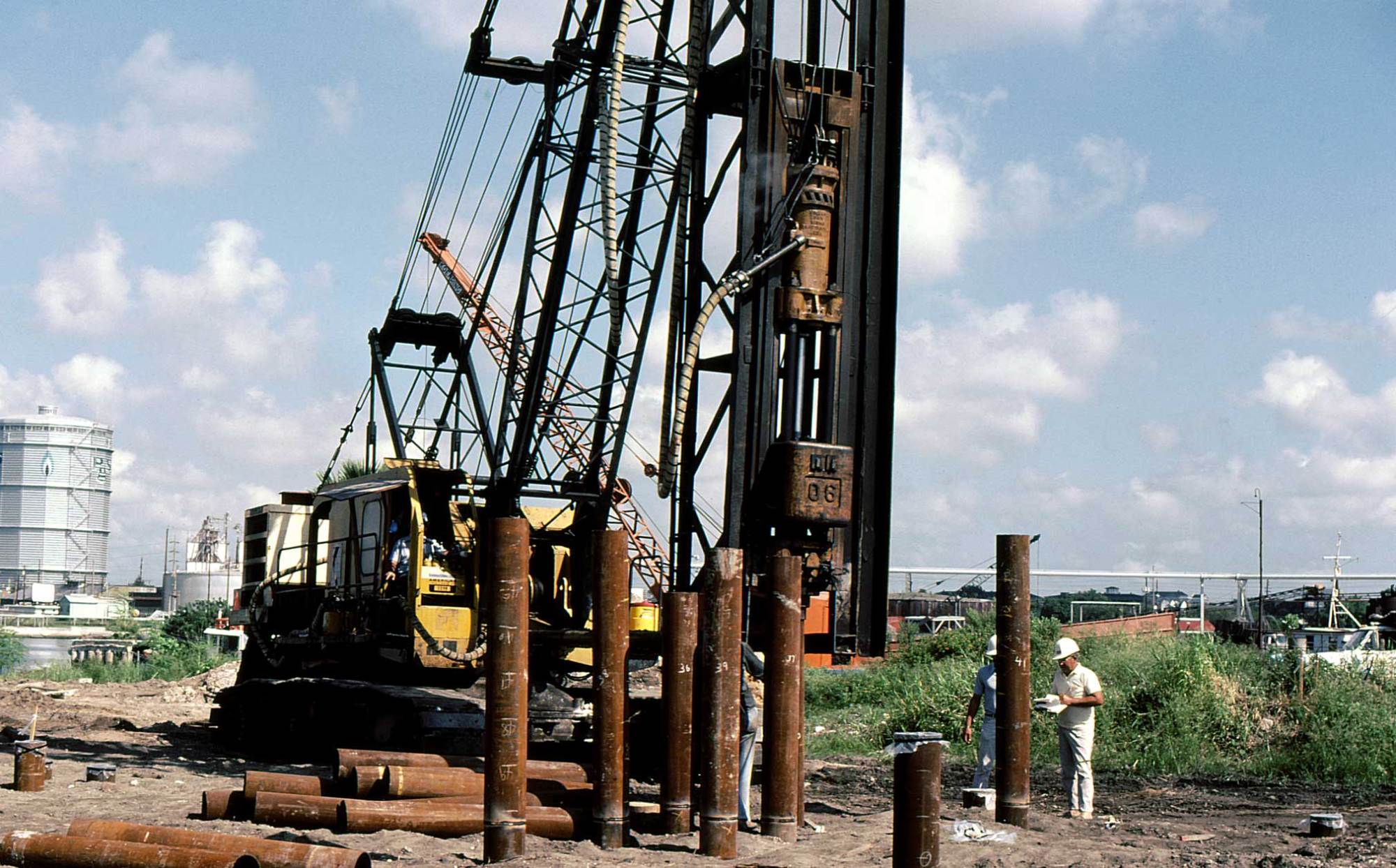

One thought on “Driven Pile Design: Introduction and Overview”